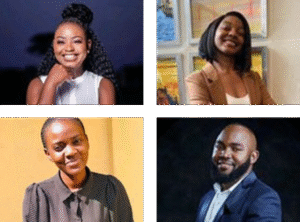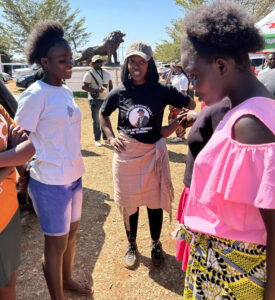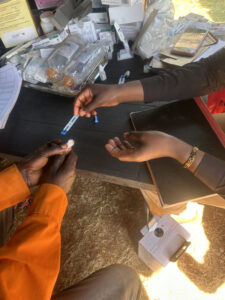Guest Authors: Precious Kaniki and Joshua Kasuba | Project YouthLink, Zambia
This blog post is the third in a series written by teams participating in the 2025 INSPIRE Designathon. Chosen from hundreds of submissions, these teams participated in a dynamic three-day sprint to sharpen their ideas and pitch innovative solutions to a panel of expert judges. Each team received funding to implement, adapt, and scale-up HIV interventions for adolescents and young adults over the coming year.
 Project YouthLink was born from a simple yet powerful question:
Project YouthLink was born from a simple yet powerful question:
What if young people could access HIV testing on their own terms, in their own spaces, with their peers by their side?
As researchers and advocates in Zambia, we have witnessed too many young people arriving at health facilities only after being sick for months—sometimes even years—without ever having taken an HIV test. Many delayed testing out of fear of stigma, because clinics felt unwelcoming, or because the nearest facility was too far away. It was heartbreaking to see young people suffer needlessly from a manageable health condition they didn’t know they had.
We knew something had to change. We wanted to re-imagine what HIV testing could look like for young people in Zambia—accessible, stigma-free, and centered on their realities.
Our Approach: Bringing HIV Testing Closer to Youth
Project YouthLink doing community outreach
- Mobile diagnostic outreach brings testing to markets, schools, and even remote places
- Peer navigation ensures every young person who tests knows they are not alone—whether their result is positive or negative
- Digital linkage tools help track referrals, send reminders, and support follow-ups discreetly and effectively
In essence, YouthLink is a bridge—between community and clinic, between fear and support, between silence and action.
From Idea to Impact
When we first shared this idea at the INSPIRE Designathon, we had the passion but not the perfect words. We were advocates and not presenters. But through mentorship and participatory learning sessions, we refined our design, learned to communicate our vision more clearly, and grew confident in presenting our work to the community
One of our biggest realizations was that diagnostics aren’t just medical—they’re social.
A test is not just a result. It’s a moment of truth that can either isolate or empower. It’s a doorway to dignity, care, and hope.
Youth are not just the future of the HIV response—they are the present. And when we truly listen to them, solutions stop being about them and start being with them. This demands trust, privacy, and peer support — all central to what our project offers.
What We've Accomplished
 So far, we have trained peer educators and navigators and carried out a pilot outreach. It hasn’t been entirely smooth—particularly in peri-urban communities. Some challenges we’ve faced include persistent stigma and limited knowledge about HIV testing among youth. One young girl told us that she was afraid of testing because most of the health workers are older people who judge young people. That perspective reaffirms exactly why this project matters: testing services must be brought to young people in spaces where they feel safe and understood.
So far, we have trained peer educators and navigators and carried out a pilot outreach. It hasn’t been entirely smooth—particularly in peri-urban communities. Some challenges we’ve faced include persistent stigma and limited knowledge about HIV testing among youth. One young girl told us that she was afraid of testing because most of the health workers are older people who judge young people. That perspective reaffirms exactly why this project matters: testing services must be brought to young people in spaces where they feel safe and understood.
Looking Ahead
We envision a Zambia where no young person discovers their HIV status too late — where diagnosis is early, stigma is reduced, and linkage to care is seamless.
Our next steps include scaling project YouthLink to more districts, strengthening partnerships with stakeholders, and integrating our model within the national HIV response.
We believe young people are not just beneficiaries — they are drivers of change. And with Project YouthLink, we are proving that when youth lead, the future of health equity shines brighter for all.
